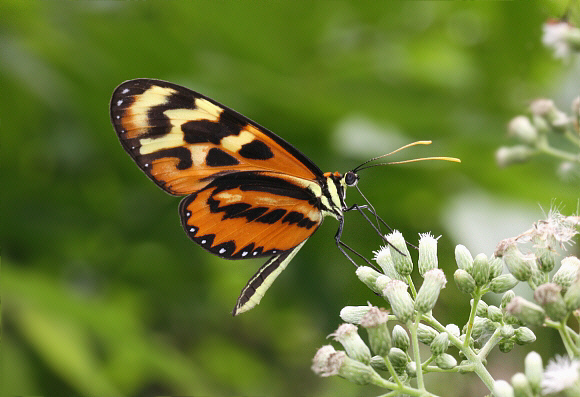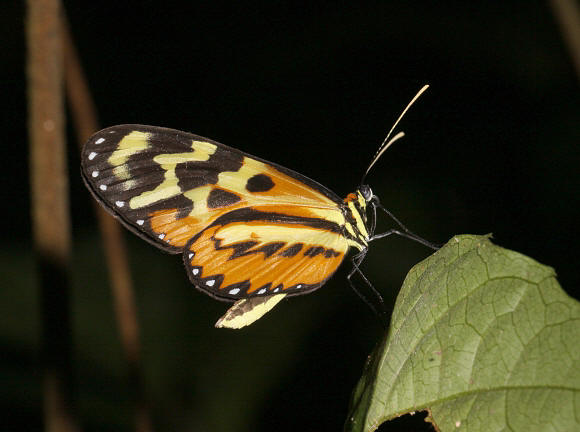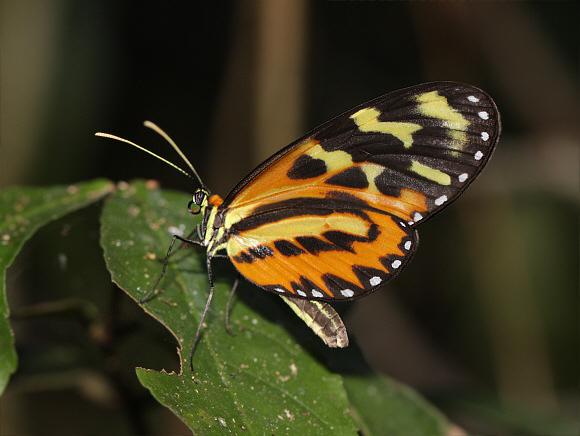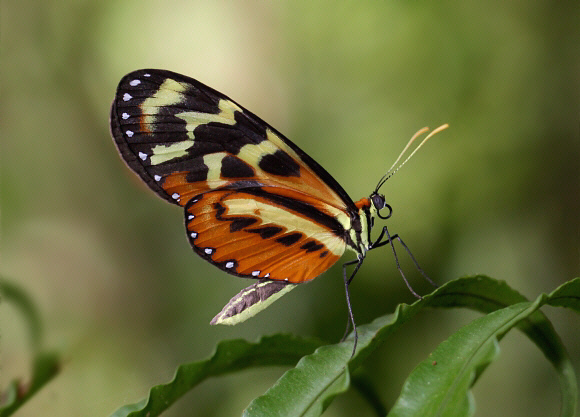
Introduction
The Ithomiini comprises of 376 known species, although it is likely that at least another 30 will be discovered in the near future. All are confined to the neotropical region. Ithomiines are unpalatable to birds, and are consequently mimicked in appearance by many other species. These include other unpalatable species (Müllerian mimics), not only from the Ithomiinae but also from several other butterfly families. There are also a large number of edible species (Batesian mimics) which have evolved similar patterns. Birds have the ability to memorise butterfly patterns and so learn to avoid eating noxious species, but are also fooled into ignoring similarly marked edible species.
Ithomiines are characterised by having small eyes, slender abdomens and long drooping antennae that lack distinct clubs. Males have a plume of long androconial scales or “hair pencils” on the costa of their hindwings. These are hidden from view when the butterflies are at rest, but are displayed when the wings are held open during courtship. Other Ithomiine characteristics include a very slow and deep wing beat, and a preference for inhabiting the darkest recesses of the forest understorey.
There are basically 2 types of Ithomiine. The first type are the black and orange-banded “tigers”, many of which are mimicked by other species due to their unpalatability to birds. The second type are the “glasswings”, recognised by their transparent or translucent wings, prominent veins, and orange wing margins. Many genera contain examples of both of these types, and in some cases an individual species may produce adults of both forms according to location.

Habitats
Mechanitis polymnia is found in disturbed forest habitats including roadsides and adjacent farmland, at altitudes between 0-1500m.
Lifecycle
The whitish barrel-shaped eggs are laid in batches of between 10-40 under the leaves of Solanum and possibly other members of the Solanaceae. The larvae are gregarious. When fully grown they are pale green streaked with yellow, and have a series of tubercles projecting below the spiracles. The chrysalis is golden with brown streaks on the wingpads and abdomen.

Adult behaviour
The butterfly is visible mainly in the early morning, and again in late afternoon, at which time the females can be found visiting Eupatorium flowers in forest clearings and along riverbanks. Males in common with other Ithomiines, form “leks” to which the females are attracted by pheromones. The pheromones are disseminated by males from “hair pencils” – special androconial scales located, in the case of Mechanitis, on the costa of their upperside hindwings. These can be seen protruding in the photograph of the ambushed example at the top of the page.
In seasonal rainforests, where there are pronounced wet and dry seasons, Mechanitis gather to aestivate during the dry season at the few remaining damp areas of the forest, typically in gullies or along the beds of streams. Such places often have 100s of Glasswing and Tiger-mimics Ithomiines in residence for up to 3 months towards the end of the dry season.

